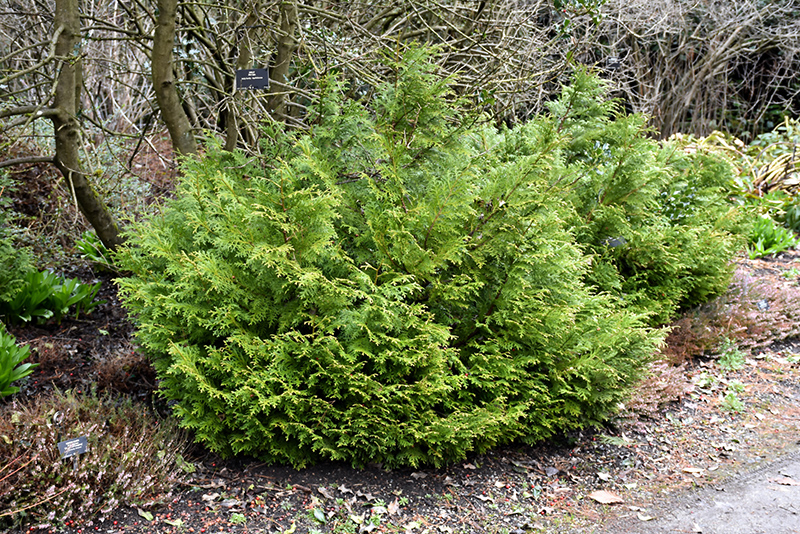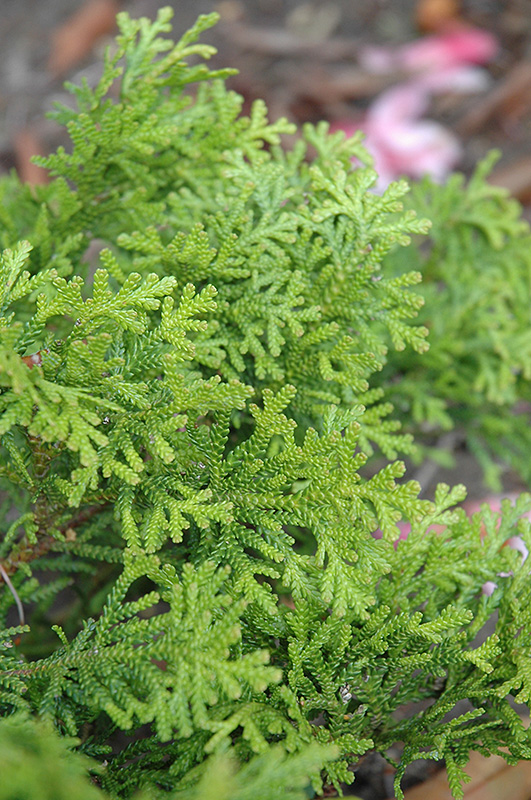False Cedar (Arborvitae), Dwarf Hiba Thujopsis dolabrata 'Nana' Height: 3 feet Spread: 4 feet
Sunlight:
Hardiness Zone: 5a Description: A compact, mound-shaped evergreen shrub with shiny dark green foliage all season long and good form, needs little pruning, a great evergreen accent for home gardens; closely related to the North American white cedar (arborvitae) Ornamental Features False Cedar (Arborvitae), Dwarf Hiba is a dwarf conifer which is primarily valued in the garden for its ornamental globe-shaped form. It has dark green evergreen foliage. The scale-like sprays of foliage remain dark green throughout the winter. Landscape Attributes False Cedar (Arborvitae), Dwarf Hiba is a dense multi-stemmed evergreen shrub with a more or less rounded form. Its relatively fine texture sets it apart from other landscape plants with less refined foliage. This is a relatively low maintenance shrub. When pruning is necessary, it is recommended to only trim back the new growth of the current season, other than to remove any dieback. It has no significant negative characteristics. False Cedar (Arborvitae), Dwarf Hiba is recommended for the following landscape applications; Planting & Growing False Cedar (Arborvitae), Dwarf Hiba will grow to be about 3 feet tall at maturity, with a spread of 4 feet. It tends to fill out right to the ground and therefore doesn't necessarily require facer plants in front. It grows at a slow rate, and under ideal conditions can be expected to live for 80 years or more. This shrub does best in full sun to partial shade. It prefers to grow in average to moist conditions, and shouldn't be allowed to dry out. It is particular about its soil conditions, with a strong preference for rich, acidic soils. It is somewhat tolerant of urban pollution. Consider applying a thick mulch around the root zone in winter to protect it in exposed locations or colder microclimates. This is a selected variety of a species not originally from North America. Special Attributes Evergreens need to be watered during the winter. Our desert climate especially in late winter to early spring evergreens can suffer during next growing season. An easy way to remember check for dryness on the holidays Halloween, Thanksgiving, New Year's Day, Valentines Day & Easter.![]()
![]()
![]()
![]()
![]()
![]()
![]()
![]()
![]()
![]()
![]()
![]()
![]()


